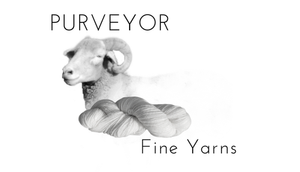Suffolk yarn, a sock to throw in the washing machine. Worn with the purl side to the world.
Suffolk sheep are the most common sheep in North America. They are widely raised for meat production. However, while all sheep must be sheared, it is difficult to obtain a quality Suffolk fleece. People raising Suffolk for meat production are not intending to also offer a pristine fleece for handspinning. The majority of Suffolk wool will be sold to the wool pool. The difficulty in obtaining Suffolk fleece is unfortunate because the yarn has very interesting qualities.
Suffolk is one of the Down breeds. The Down breeds are several distinct sheep breeds that have certain common characteristics. The Down breeds are Suffolk, Hampshire, Horned Dorset, Polled Dorset, Oxford, Southdown, Dorset Down, and Shropshire. Cheviot is not a true Down breed but has the common characteristic, the wool is very difficult to felt. That means the yarn is difficult to felt. So one can create a sock yarn that is a non-superwash natural wool, but the yarn can be tossed in the washing machine.
This also means that if you like to do needle felting or wet felting, do not use Suffolk or any of the other Down breeds. A woman visiting my booth at a fiber festival told of trying to felt wool for “days and days” with no change, to discover they were using 100% Oxford wool. Oxford is a Down breed, it does not felt well, or in this case, not at all.
I knit a pair of boot socks in Suffolk yarn, DK weight. These are socks made for wearing with heavy shoes when I am on my feet all day. The first time I wore the socks, I realized that I could actually feel the purl bumps on the souls of my feet. When I got home I turned the socks inside out and from that point on, that is how I wore them. With the stockinette next to my skin and the purl bumps facing the world. This is a very comfortable sock.
When it came time to wash the socks, I dropped the socks into a lingerie bag and threw it into the machine with jeans, t-shirts and all the other dirty clothes. I did a normal wash cycle with cold water wash and rinse. When finished the socks were removed from the lingerie bag and draped on the drying rack. The socks did not felt at all. One still sees the perfect stitch definition.
I have been wearing (and washing) these socks for over two months. The socks have shown no sign of felting, they have pilled a bit, but that is to be expected.
Choosing a yarn, based on the properties of the fleece, can totally change the qualities of the finished project. The Suffolk yarn is natural with minimal processing (see earlier posts for detail on how yarn is created). These socks will last for years and they clean easily.
playing with the dye, being creative with color
A word (or two) about Superwash yarn:
Superwash is a chemical process. The purpose of the process is to remove or alter the outer “scales” on the strand of fiber. It is the microscopic scales on each fiber of wool that, with heat and agitation, bind together, causing wool to “felt”. The Superwash process uses harsh chemicals, more water and creates a waste product that is definitely not eco-friendly and is often referred to as toxic.
A word on sock construction.
My basic “perfectly fitting sock” formula. I knit the socks with undyed yarn. I had decided to dye the finished sock. This technique allows for a creatively colored sock. I used commercial acid dye which was “set” with citric acid and steam heat.



